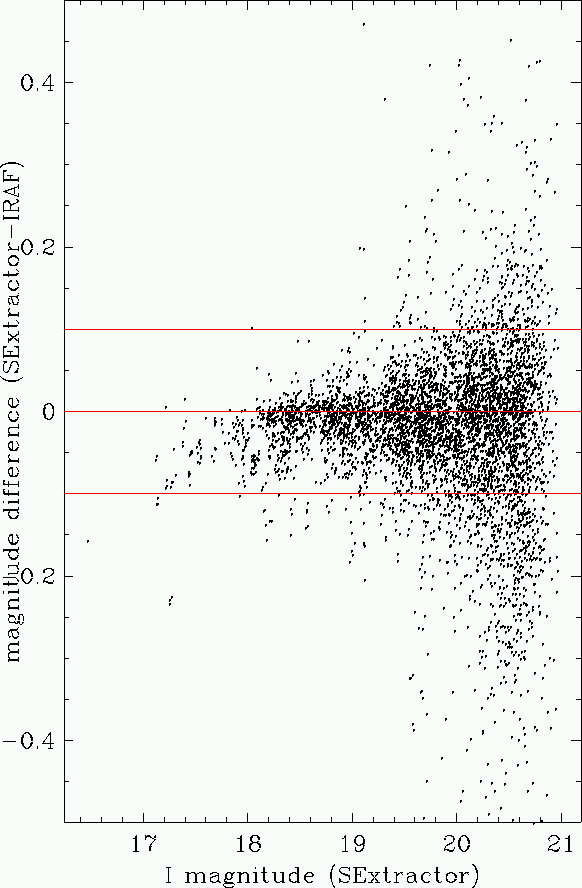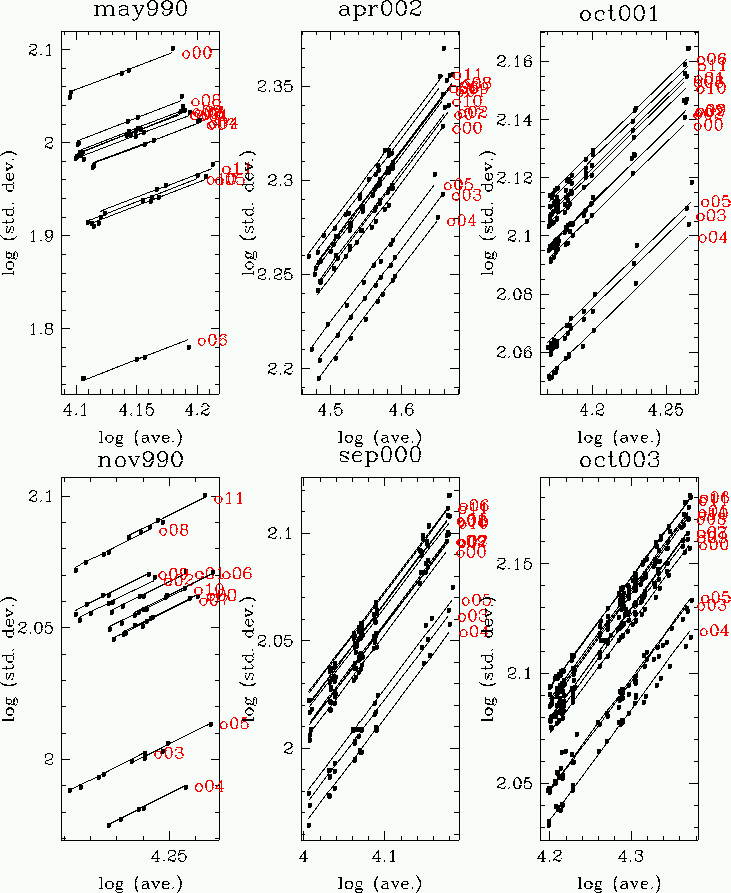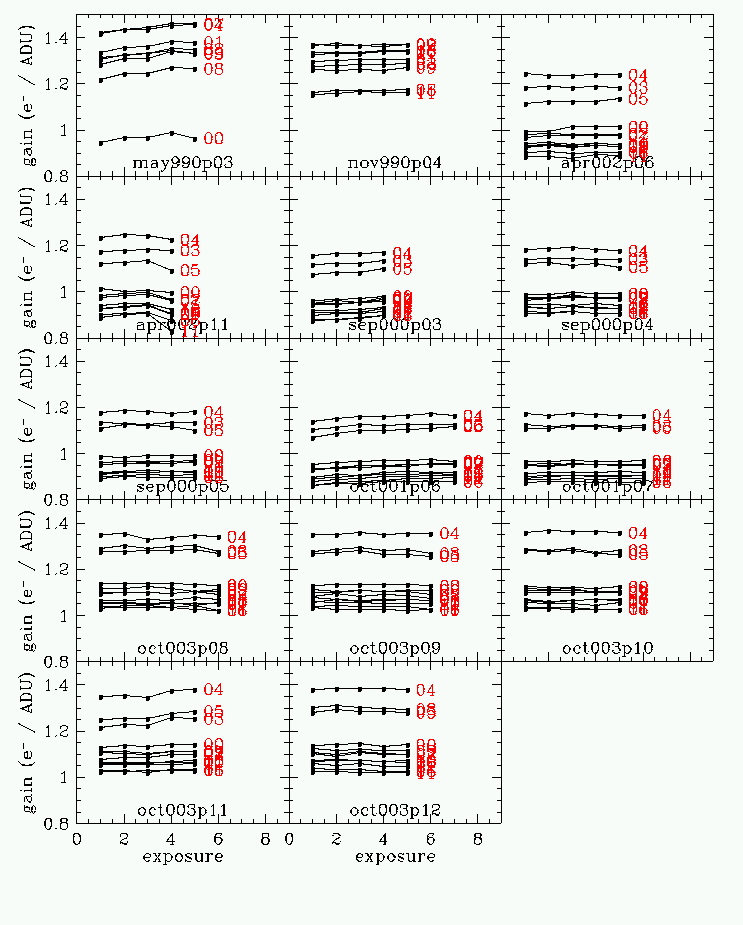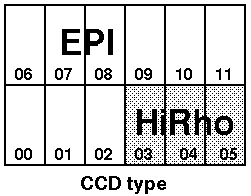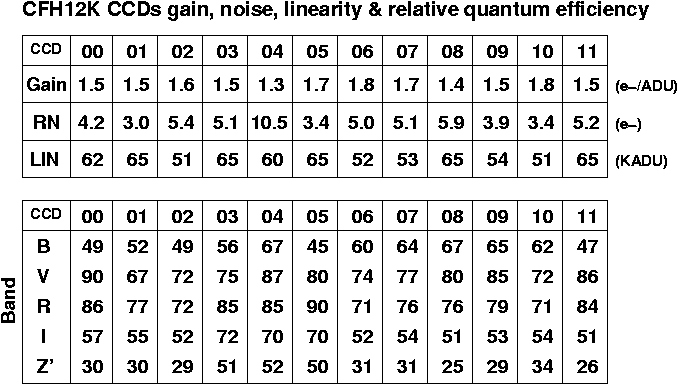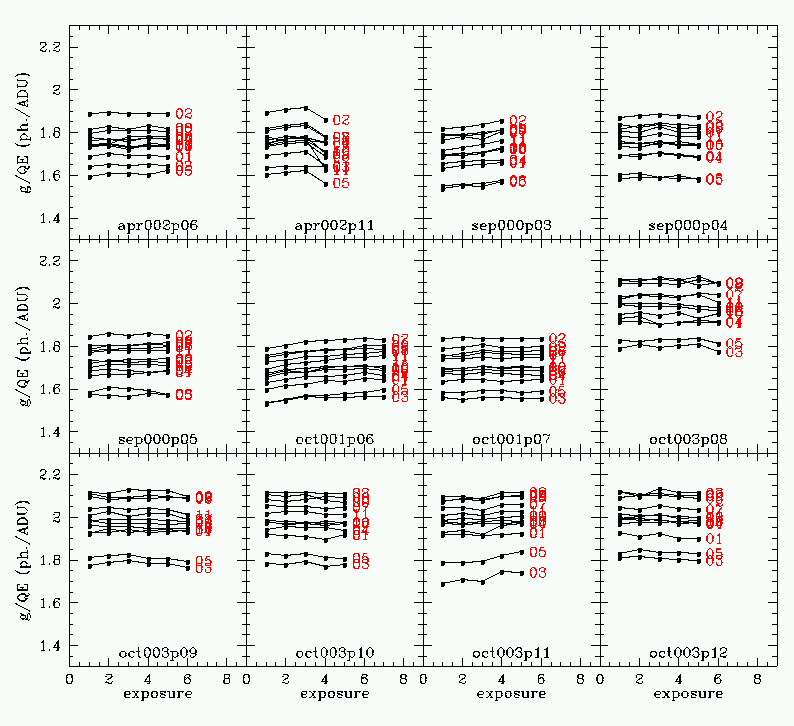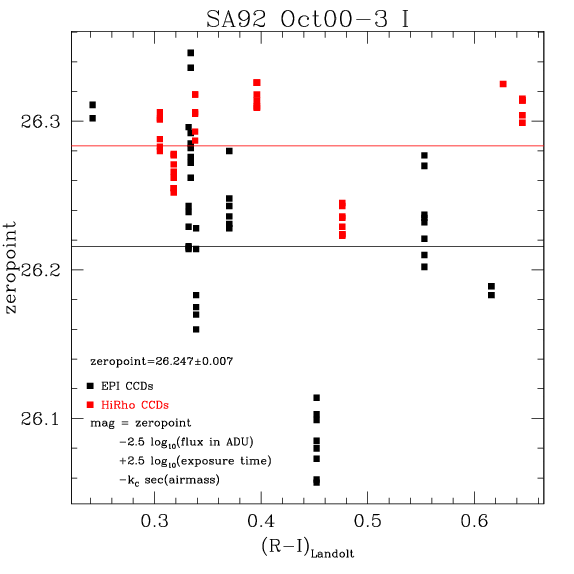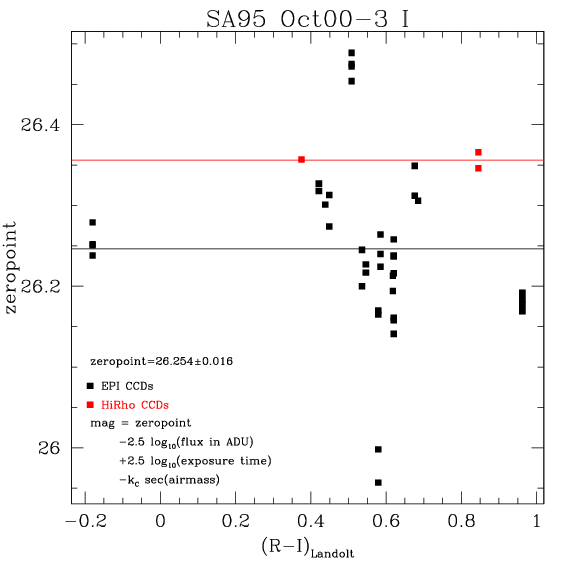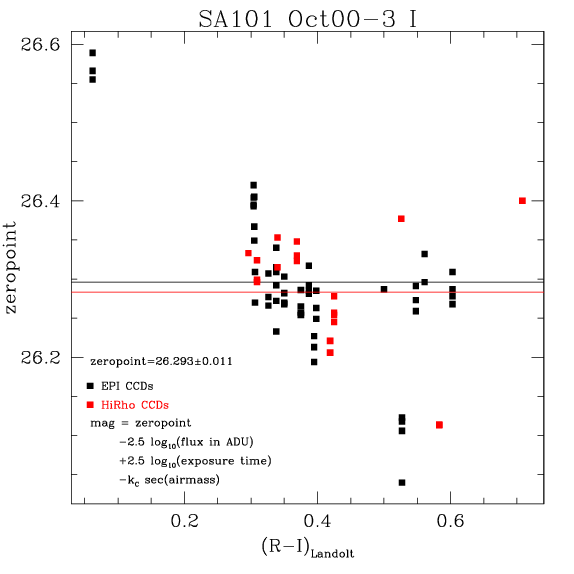Gain:
Since the flat fielding procedure used by FLIPS takes into
account the differences in instrumental performance (amplifier gain and quantum effiency)
from CCD to CCD, the measured gain in the flatfielded images
(electrons per ADU) divided by the average quantum effiency
of each detectors (detected electrons per incident photon)
should be the same for all the CCDs.
The gain of any image can be determined by examining
the statistics of the non-object (ie blank sky) pixels.
The standard deviation of the sky (or Noise, N) in electrons is related
to the average (or signal, S) in electrons by:

Where R is the read noise (in electrons)
and g is the gain (in units of e-/ADU). Gain is the conversion factor
between e- and ADU. Converting to ADU the above equation in ADU becomes:

Note that the gain does not factor out
of this relation. This means that if one plots N(ADU) vs S(ADU), it is
possible to determine the gain and the read noise. At low signal,
read noise dominates, and can be simply read off the graph. At high signal,
the read noise can be neglected and the gain be determined by fitting. The
slope of the relation is still one 0.5 on a log-log plot, but with an offset
due the gain. The above equation becomes:

or taking the log:

From this, gain can directly calculated by:

Practically speaking,
the values of N were computed by diving each image into
10x10 subrasters and computing the standard deviation for each subraster.
By using subrasters, one avoids the problem of including the variations
due to fringe pattern. The residual fringe is typically 1%. On an image
with a typical flux of 20000 electrons, this causes variations of about
200 e-, while the real noise is about sqrt(20000) = 140 e-.
However since the fringes typically vary on scales of about 50 pixels, using
10x10 pixel subrasters effectively acts as high-pass filter,
removing the "DC" signal, while retaining
the "AC" signal.
Subrasters were discarded if any of the 100 pixels was on a bad column
(as determined from the relevant mask image) or an object (as determined
by using a SExtractor "-OBJECT" check image).
The average standard deviation of all the usable subrasters gives
the standard deviation for the image.
The values of "N" were computed by taking the median of the image.
All this assumes that there is no residual noise in the flat field.
The results are shown in the following figures:
|
